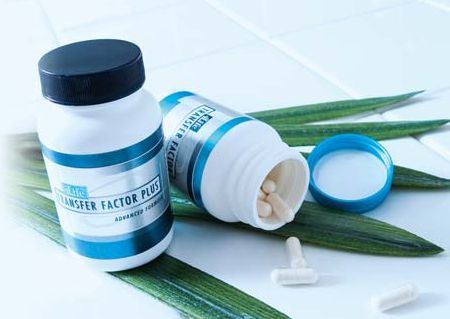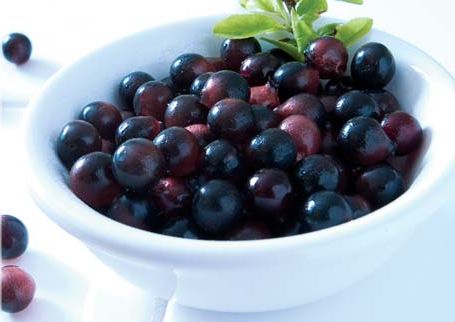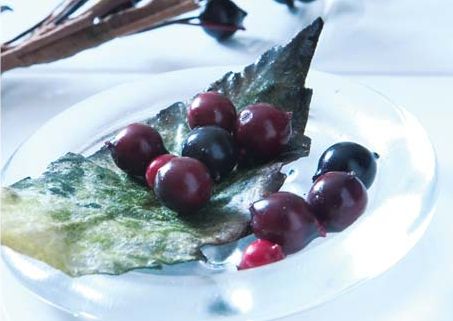![]()
4Life Transfer Factor E-XF | Acai berries | Pomegranates | Blueberries | Elderberries | Purple grapes | Lactoferrin

If you’re looking for the one thing that changes everything, it might just be your immune system.
As your body’s first line of defense, your immune system is a watchful guardian. As it works to defend other bodily systems against potential harm, your immune system relies on three things:
Designed by nature to educate a newborn’s immune responses, transfer factors:
Teach your immune system to discern between helpful and harmful foreign agents in the body and to remember what you’ve encountered before.
Provide the genetic coding your body needs to know how to deal with the problem.
Activate your body’s innate response system, Natural Killer (NK) cells which go to work restoring supporting health and balance.
Transfer Factor E-XF
RioVida’s fortifying ingredient is 4Life Transfer Factor E-XF. All transfer factors work with the immune system, but Transfer Factor Advanced Formula (E-XF) has been clinically tested and shown to increase immune system response by 283%! The power of the Advanced Formulas comes from combining the transfer factors of two sources, cow colostrum and chicken eggs. The wisdom and experience carried by these molecules support the immune system’s goal of restoring supporting health to the body.
RioVida’s Transfer Factor E-XF:
Gives your immune system a memory boost, reminding it of past health threats.
Boosts or balances immune response, depending on the need.
Educates new immune cells.
Delivers a genetically-encoded “plan of action.”
Speeds up the recognition phase, enabling your body to respond more quickly to whatever it encounters.

A highly concentrated punch of energy, the açai berry is nothing short of a nutritional miracle. Nicknamed “nature’s energy fruit,” açai is popping up on lists of “Ten Best Superfoods” across the country. Not only is the berry rich in antioxidants (with anthocyanins 10-30 times more powerful than the antioxidants in red grapes), but it also boasts a balanced complex of essential fatty acids (including those hard-to-get omega 9s and omega 6s), amino acids, and valuable trace minerals. And how does it taste? Think a vibrant blend of wild berries with a hint of chocolate.
A dense source of nutrients, wild açai berries have got what your body needs:
The difference soil makes
The USDA recently completed a survey test of the ORAC values of fruits and vegetables. Although it wasn’t surprising that blueberries came out high on the list, what was surprising was that natural blueberries had an ORAC score of 13,423 points per serving and farmed blueberries had a much lower score of 9,761 points per serving—a difference of almost 4,000 points! Where did this difference originate? In the soil.
It goes without saying that the açai berries of the Brazilian rainforest are grown in some of the world’s richest, most fertile soil.
açai helps the rainforest
In recent years, locals have allowed logging in the Amazonian rainforests to provide some much-needed economic growth. Now, the harvesting of açai has given locals another way to meet their financial obligations and still protect the forests that help balance ecosystems world-wide.
“There is no one solution to save the Amazon rainforest. The açai is the
most important non-wood forest product in terms of money from the river delta of
the Amazon.”
—Greenpeace.org.

Historically, pomegranates were known to symbolize health, fertility, and rebirth. We’re not claiming that the pomegranate juice in RioVida can literally raise the dead, but it might just put a little kick back in your day.

Often touted as the berry highest in antioxidants, blueberries rate high on every ORAC test. In addition to actively scavenging free radicals, blueberries are busy maintaining digestive health and supporting a healthy inflammatory response.

The potent purple pigment in elderberries indicates their high antioxidant value, as well as their ability to promote cardiovascular health. In addition to antioxidants, elderberries have also been shown to support healthy stress levels.

An active antioxidant, purple grapes also support circulatory and cardiovascular health and are thought to be the secret balancing agent in the French diet.

Lactoferrin is a minor glycoprotein component of whey. It belongs to the iron transporter or transferrin family of glycoproteins. Lactoferrin is also found in exocrime secretions from mammals and is released from neutrophil granules during inflammation. The lactoferrin concentration in bovine (cows) milk is only 0.5% to 1.0% while human breast milk can contain as much as 15% lactoferrin.
Lactoferrin plays several important roles in human biology. First, Lactoferrin is believed to play a role in the uptake and absorption of iron through the intestinal mucosa. It may be the primary or sole source of iron for breast fed infants. Second, Lactoferrin appears to have antibacterial, antiviral, antifungal, anti-inflammatory, antioxidant and immunomodulatory activities.
The possible antiviral activity of supplemental lactoferrin may be due to its inhibition of virus-cell fusion and viral entry into cells. It is believed that Lactoferrin may promote the growth and differentiation of T lymphocytes. Lactoferrin appears to bind uniquely to sites on the T4 (helper) and T8 (suppressor) lymphocytes. Lactoferrin also appears to play a role in the regulation of cytokines and lymphokines, such as tumor necrosis (TNF)-alpha and interleukin (IL)-6.
Lactoferrin's possible antioxidant activity may also
contribute to its possible immunomodulatory activity. Antioxidants are
getting increasing attention as possible therapeutic agents in infections
and a variety of other diseases. Lactoferrin's ability to bind iron probably
contributes to both its antioxidant properties and its antibacterial action.
Free iron is a contributor in the generation of free radicals.
Lactoferrin
Research Summary
Lactoferrin, a natural occurring cytokine in the human body, has exhibited significant activity against Escherichia coli, Proteus mirabilis, Staphyloccocus aureus, Candida albicans, HIV, herpes simplex type 1, hepatitis C, cytomegalovirus and other pathogens in vitro (in a lab dish) studies. Human studies, however, are almost entirely lacking.